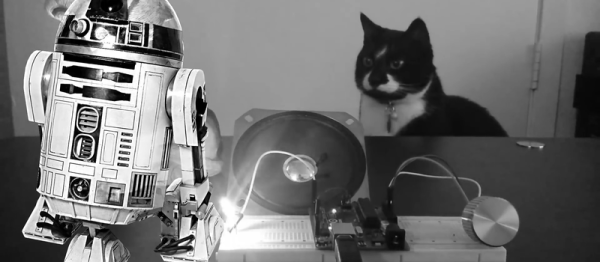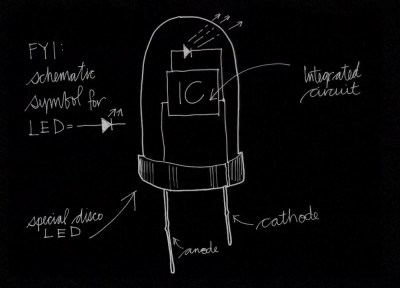Many of the hacks featured here are complex feats of ingenuity that you might expect to have emerged from a space-age laboratory rather than a hacker’s bench. Impressive stuff, but on the other side of the coin the essence of a good hack is often just a simple and elegant way of solving a technical problem using clever lateral thinking.
Take this project from [drtune], he needed to synchronize some lighting to an audio stream from an MP3 player and wanted to store his lighting control on the same SD card as his MP3 file. Sadly his serial-controlled MP3 player module would only play audio data from the card and he couldn’t read a data file from it, so there seemed to be no easy way forward.
His solution was simple: realizing that the module has a stereo DAC but a mono amplifier he encoded the data as an audio FSK stream similar to that used by modems back in the day, and applied it to one channel of his stereo MP3 file. He could then play the music from his first channel and digitize the FSK data on the other before applying it to a software modem to retrieve its information.
There was a small snag though, the MP3 player summed both channels before supplying audio to its amplifier. Not a huge problem to overcome, a bit of detective work in the device datasheet allowed him to identify the resistor network doing the mixing and he removed the component for the data channel.
He’s posted full details of the system in the video below the break, complete with waveforms and gratuitous playback of audio FSK data.
Continue reading “Synchronize Data With Audio From A $2 MP3 Player”



















